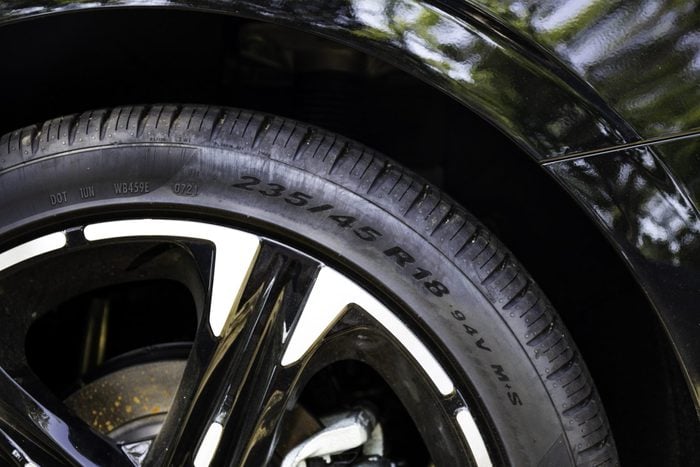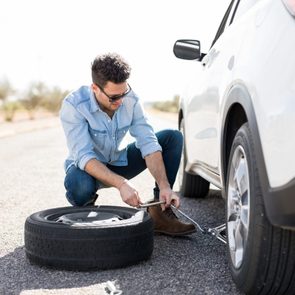Here’s What Those Numbers on Your Tires Mean
Updated: Nov. 25, 2022

There's more to those numbers than meets the eye. Here's what those numbers on your tires mean—and why knowing them is essential for car owners.
Let’s talk tires
Have you ever taken a close look at your tires? If so, you’ve likely seen a series of numbers and letters imprinted in the rubber. What exactly do those numbers mean, though? And why are they there in the first place? Well, turns out, those numbers are more than just a weird car feature—in fact, they serve an important purpose. Here’s why tires (including the best tires) have numbers on them and what they actually mean.
What do those numbers on tires mean?
Each number and letter on your tires mean different things. Let’s take this example tire size and break down what each part means: P235/75R15 105S
- P—The P in the beginning of this number stands for the type of tire you have. “P” means the tire is made for lighter passenger cars. If you see “LT” on your tires, it means they’re made for heavier vehicles like SUVs and light trucks.
- 235—This number indicates the width of the tire, measured in millimeters. The width is measured from sidewall to sidewall, a.k.a. the smooth vertical section on your tire’s side.
- 75—This is the tire’s aspect ratio, comparing the tire’s height to its width. For this tire, it means its height is 75 percent of its width.
- R—This defines the construction within the tire. “R” stands for radial. “B” means belted bias and “D” stands for diagonal bias construction.
- 15—This is the wheel’s diameter, commonly measured in inches.
- 105—This is the tire’s load index, a.k.a. how much weight the tire can support. A tire with a 105 load index can support a maximum weight of 2,039 pounds.
- S—This is the tire’s speed rating. This is the maximum speed your car can reach before the tire’s rubber risks being damaged, and each letter represents a different speed. “S” is 112 miles per hour. Just because your tire can function up to this speed, though, does not mean you should speed on the road. By the way, learn why your tires are the most important safety feature on your car.
Why do those numbers on tires matter?
The numbers on tires matter for a number of reasons. For starters, it tells you the size of the tire, which is important to know. Putting the wrong sized tires on your car can lead to a number of hazards, such as rubbing against the body of your vehicle and catching important electrical lines. Driving on the wrong sized tires over time can also cause long-term tire wear, which can impact your car’s overall function.
If you aren’t sure what size your tires should be, visit a tire expert. They’ll help you find the right sized tires and provide advice on how to keep them in good shape (like making sure know the ideal tire pressure in cold weather).




















